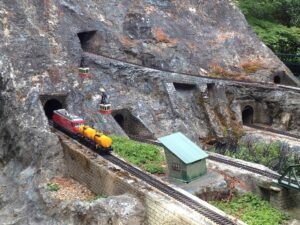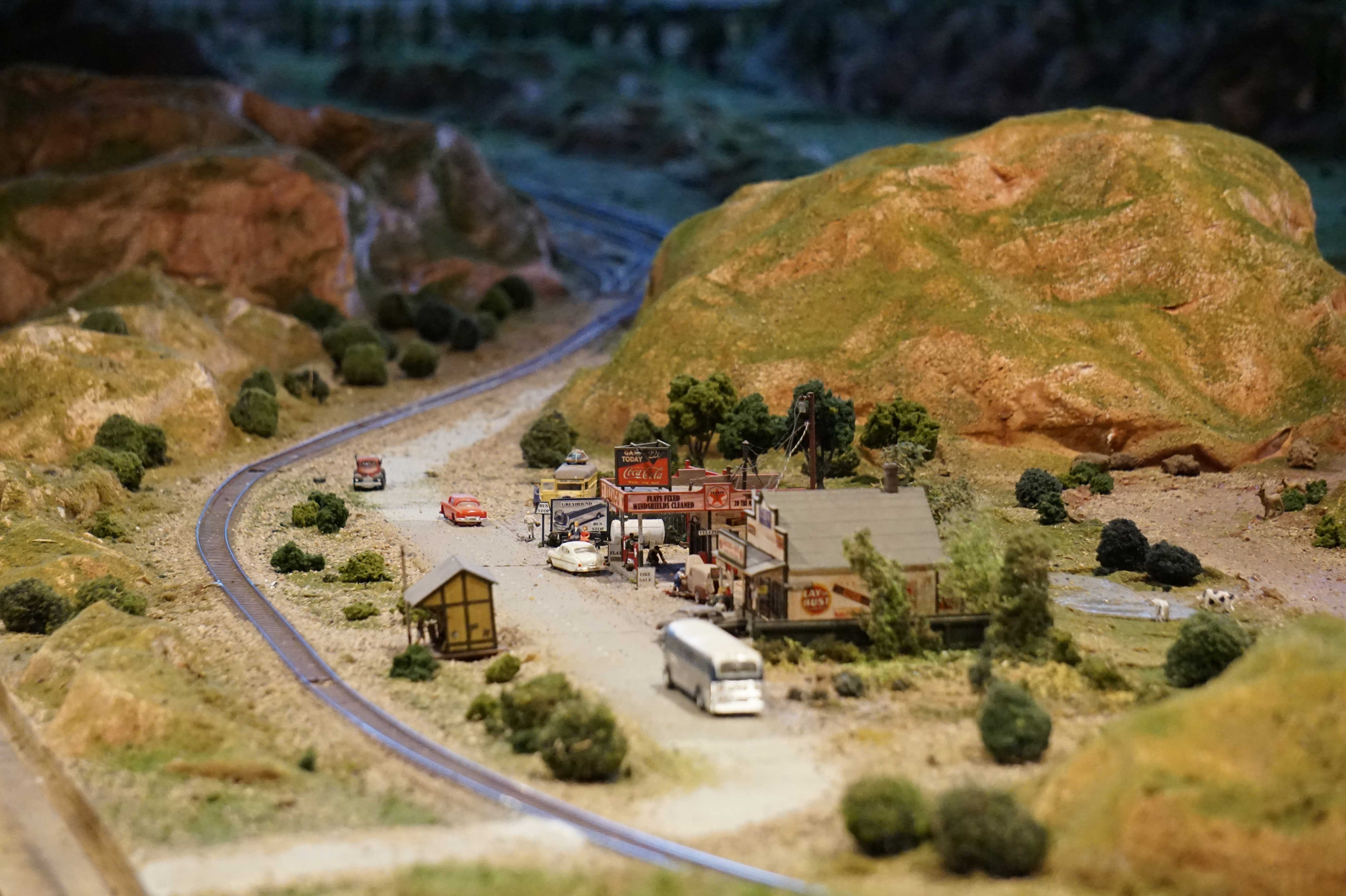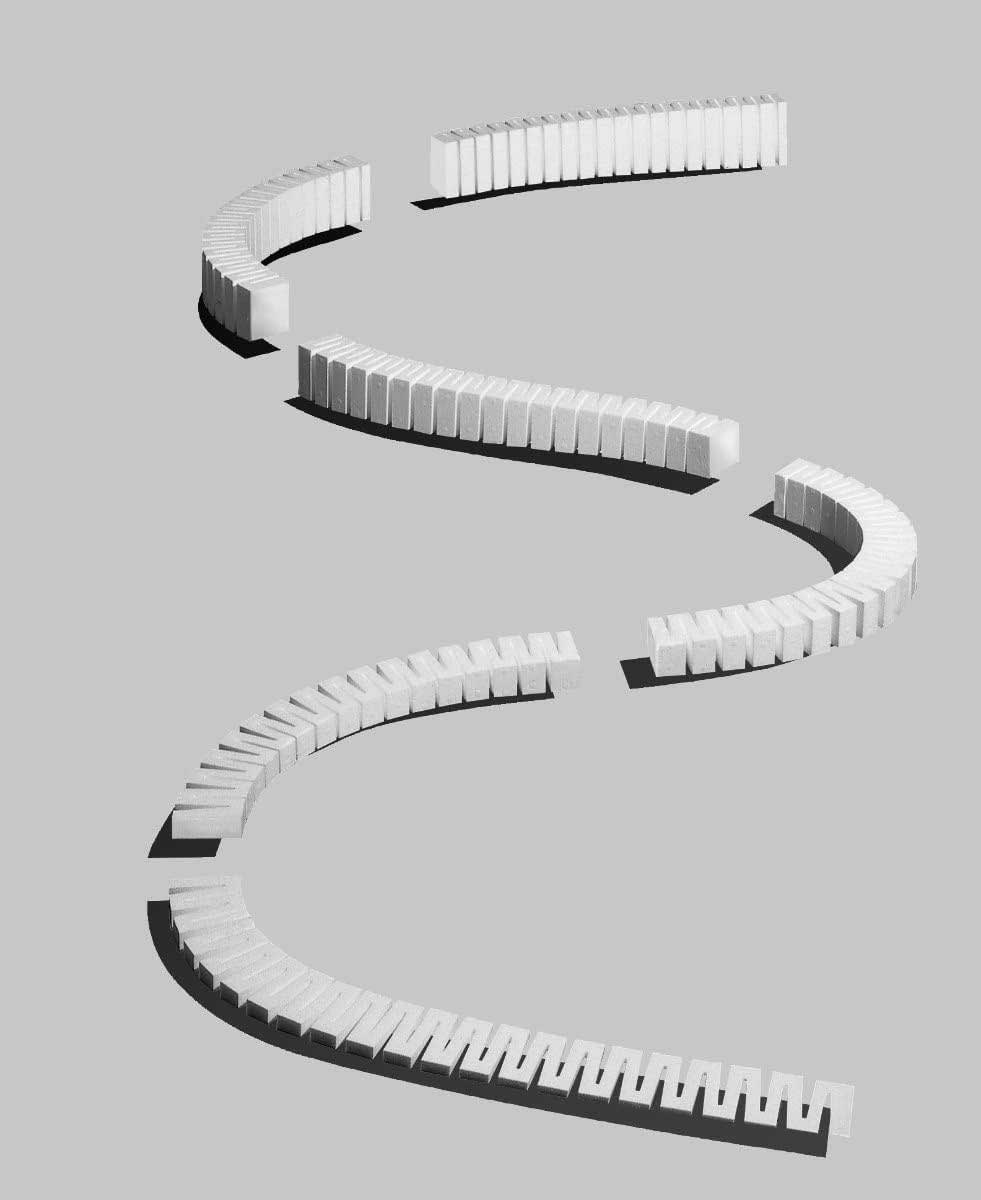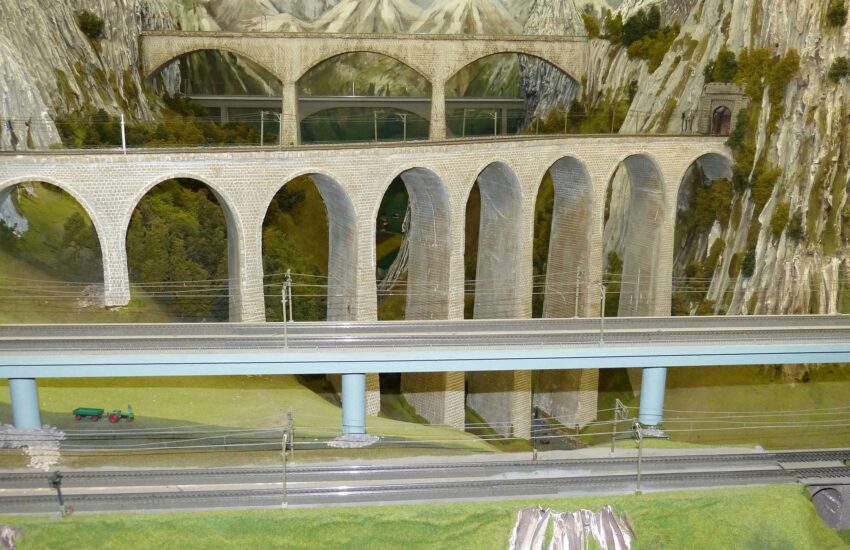The idea of running your model railway locomotives up and down hills, through valleys, over bridges and viaducts is a challenge every model railroader wants to take on. Creating spectacular scenery around the railway.
When creating inclines on model railways there are many things to consider, to get the best from your locomotives. From the power of the locomotive to the length and weight of the train carriages. The most obvious we will look at first is how steep or what grade to make the incline.

Model Railway Inclines & Grades
The steepness of the track is known as the grade and is measured as a percentage. As a reference 25 inches of model railway track rising to a height of 1 inch would make the grade 4%. 100 inches of railway track rising to the same 1 inch of height would equal a 1% grade.
Getting the grade of the incline right can make a huge difference to how smooth your model railway will run. You will be limited by the space in which you have to model your railway and that will determine the grade you have to run.
We recommend sticking to below 3% grade on inclines. Track that is too steep will make the locomotives struggle for traction and place greater stress on the motors. The maximum figure would be around 5%, again this figure will have an impact on how many carriages and cars that are attached to the model train.
Grades on model railways are noticeably steeper than on the real thing. With a maximum grade on a real railway approaching 2%. If you are modelling realism, then bear this in mind.
Maximum inclines on Model Railways
As previously mentioned, the grade of the incline on a model railway is limited by several factors. The locomotive, size of the layout and size of the trains and number of cars attached all play a part.
Model trains come in all shapes and sizes. Some are much heavier than others and this extra weight can provide more traction whilst moving up a hill. The power of the loco will also play a part. Light trains will struggle on the steeper inclines as the wheels begin to slip and lose traction. Doubling up the number of locos can help overcome any power shortage for pulling up hills.

If you wish to model long winding trains with many cars of industrial goods or carriages, then moving them up inclines will be a challenge and would most likely place to much stress on the model train. Some of the better manufactured trains will be able to move 10-15 cars up a 3/4 % incline on a model railway.

Curves and Inclines on Model Railways
When creating loops on your layout it is important to know that an incline on a curve can add more stress to the locomotives. A curved incline makes the grade even steeper as the train will struggle with the tighter inner rail. Less cars would have to be pulled.
Tips for model railways with inclines.
- One of the ways to get around the limitations of inclines would be to have multiple powered or motorized units on your train. Effectively increasing the power for the load being pulled.
- Always ensure smooth operation of your trains before securing the track in place. Pulling it back up after its already secured can be time consuming and demotivating.
- Use pre-made inclines. This helps to ensure the inclines remain smooth and level all the way up the hill. Attempting to get this right by yourself can take a long time. There are some excellent ones on the market such as Woodland Scenics foam inclines that are very simple to put in place.
- One last factor to consider is the clearance when running trains under bridges or into tunnels. Be sure to get this right before laying the scenery in place.
- The best tip we can recommend. Avoid inclines altogether! If you want railway lines at different levels, then design your layout with two separate lines at different levels that don’t rise and fall but remain level around the layout. Keep it simple!

